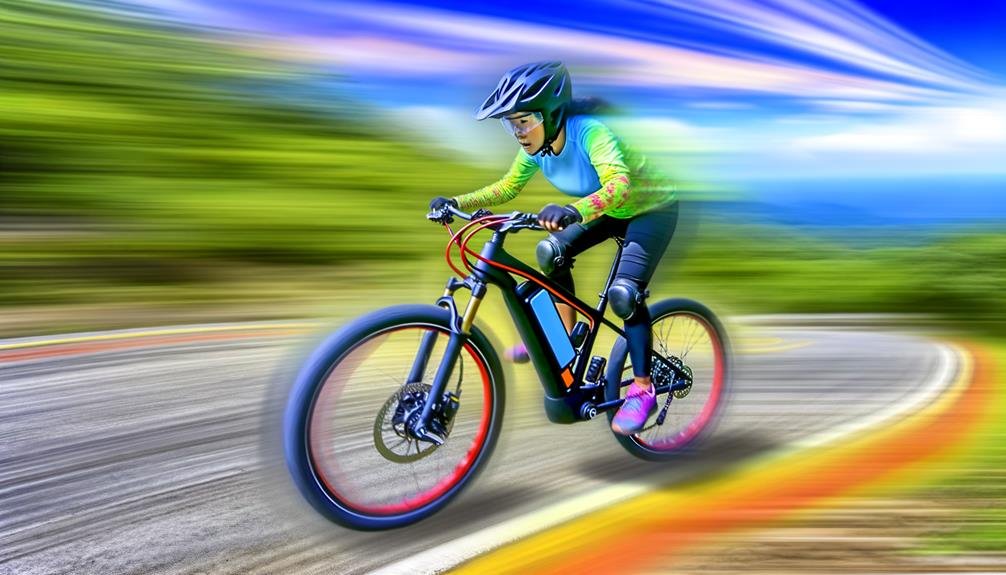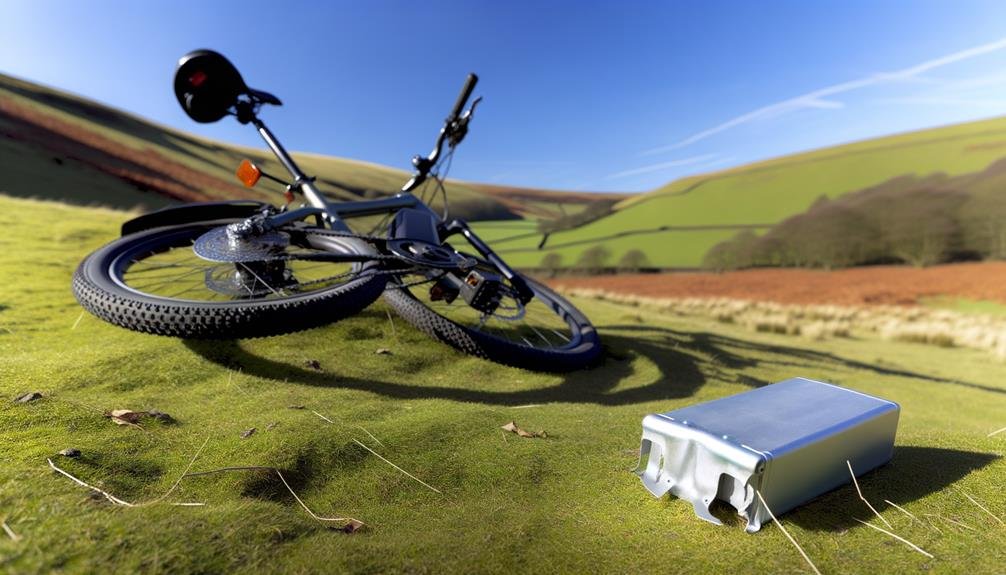Charles Miller is a veteran bike enthusiast with over 12 years of experience dealing with bikes as a mechanic. Despite immense love and expertise for...
The complexity of pedaling an electric bike, or e-bike as they're commonly known, is an intriguing topic that involves the interplay of several variables.
A common misconception is that e-bikes require minimal effort, essentially doing all the work for you. Yet, this is not entirely accurate. Factors such as bike type, power assistance level, and the rider's physical input dramatically influence the pedaling difficulty.
While Class 1 and Class 3 e-bikes necessitate active pedaling to engage the motor, Class 2 e-bikes, armed with a throttle, do not require any pedaling. Despite the assistance from the motor, the fact remains that e-bikes are typically heavier than their non-electric counterparts, potentially making pedaling more strenuous without motor assistance.
So, how does all this information translate to the real-world pedaling experience on an e-bike? Let us dissect this further.
- Key Takeaways
- Understanding Electric Bike Mechanics
- Pedal Assist and Throttle: A Comparison
- Pedaling Role in Electric Bike Performance
- Riding an Electric Bike: The Basics
- Electric Vs Traditional Bikes: Speed, Weight, Cost
- Exploring Electric Bike Without Pedaling
- Distance Coverage: Electric Bike Without Pedaling
- Best Value Electric Bikes: A Review
- Frequently Asked Questions
- Conclusion
Key Takeaways
- Electric bikes have different classes, each with distinct regulations and speed limits.
- Pedal assist activates the motor when the rider pedals, providing power on hills and turns.
- Throttle control propels Class 2 e-bikes without pedaling, draining the battery quicker.
- Pedaling optimizes battery life, enhances bike efficiency, and contributes to a healthier fitness routine.
Understanding Electric Bike Mechanics
Delving into the mechanics of electric bikes, it's essential to understand that these innovative vehicles are classified into Class 1, 2, and 3, each characterized by distinct regulations and speed limits, and come equipped with features like a pedal assist and throttle function to enhance the riding experience.
Understanding electric bike mechanics goes beyond merely knowing how to pedal an electric bike. The electric motor, a fundamental component of the electric bike, plays a pivotal role in these classifications. In Class 1 and 3 electric bikes, the pedal assist feature is prominent. It activates the electric motor when the rider pedals, providing a smooth and effortless ride.
Conversely, Class 2 electric bikes primarily rely on their throttle function, propelling the bike forward without the need for pedaling, akin to motorcycles or scooters.
However, it's critical to note that these electric bikes can also offer a traditional bike experience. Riders can choose to pedal without using the electric motor, providing a versatile usage and good workout option. This duality, coupled with regulated motor control and speed, makes electric bikes an appealing choice for a broad spectrum of riders.
Pedal Assist and Throttle: A Comparison
Navigating the world of electric bikes, it becomes clear that a key differentiator lies in their propulsion mechanisms: pedal assist and throttle, each offering a unique riding experience tailored to various conditions and rider preferences.
These mechanisms define the degree of physical effort required by the rider, shaping the way rider to control the electric bike. A pedal assist e-bike necessitates pedaling, activating the motor to supplement the rider's effort, providing an effortless cruising experience. In contrast, a throttle-based e-bike gives power on-demand, functioning like a motorcycle or scooter, with no need to pedal.
Consider the following comparisons:
- Pedal assist activates the motor when you are pedaling, making it potent on hills, turns, and slight inclines.
- Throttle, activated by a button or grip twist, provides instant power, but drains the battery quicker.
- An Electric Bike without pedal assist or throttle can still serve as a traditional bike, offering a workout option.
- Legalities vary; while Class 1 and Class 3 e-bikes feature pedal assist, Class 2 e-bikes possess a throttle.
Understanding these variations allows for an informed choice, ensuring a fulfilling and compliant e-bike experience.
Pedaling Role in Electric Bike Performance
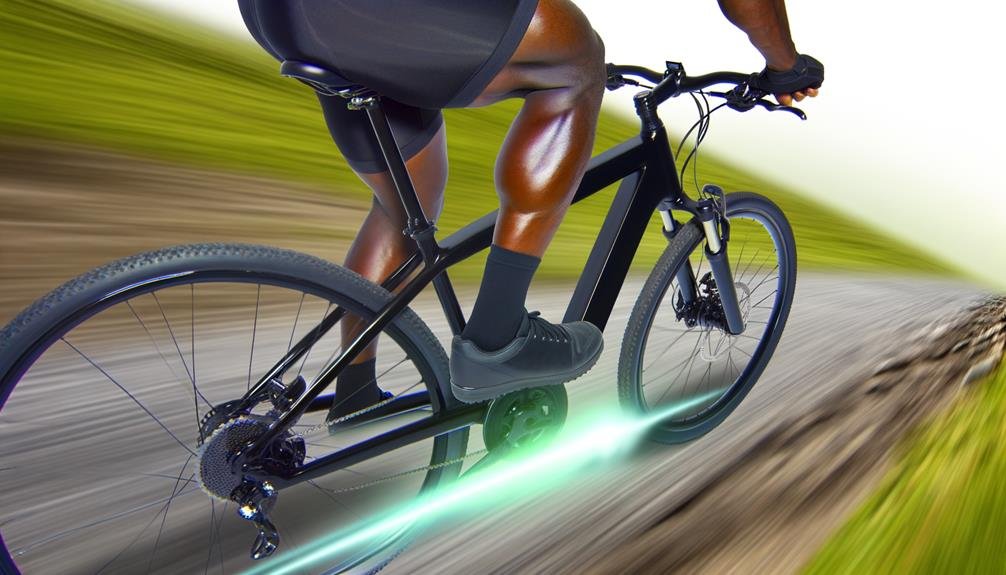
The role of pedaling in the performance of electric bikes is multifaceted. Its influence extends to power assist levels, the balance between pedaling and throttle control, and overall bike efficiency.
Power assist levels are determined by the rider's pedaling input. When combined with the electric motor, this input can significantly enhance the bike's speed.
The interplay between pedaling and throttle control can shape the rider's experience. Finding the right balance between these two factors can result in a smooth and enjoyable ride.
Strategic pedaling also plays a crucial role in maximizing bike efficiency. By pedaling strategically, riders can optimize the duration of the battery life and improve the overall performance of the bike.
Power Assist Levels
Often, riders of electric bikes can leverage multiple power assist levels, an innovative feature that activates the motor when pedaling, thereby providing control over speed and steering while making the ride feel effortlessly smooth.
- Electric Bike's power assist levels offer customization, enabling riders to choose the amount of assistance they receive based on their preferences and the terrain.
- Higher assistance levels require less pedaling effort, offering increased speed and a more leisurely ride.
- Pedal assist proves particularly beneficial on hills and turns, providing a welcome push with minimal resistance.
- Notably, the selected power assist level can help conserve the electric bike's battery range, allowing riders to manage the required effort effectively.
In essence, power assist levels influence how hard you have to pedal when you Ride an Electric Bike, offering a tailored, user-friendly experience.
Pedaling Vs. Throttle Control
While understanding power assist levels and their influence on e-bike performance is crucial, it's equally important to examine the difference between pedaling and throttle control and their respective roles in electric bike operation.
Pedaling, facilitated by a torque sensor, activates the motor in Class 1 and Class 3 electric bikes, providing seamless control over speed and direction.
Throttle control, on the other hand, propels a Class 2 electric bike without pedaling, similar to motorcycles. However, constant use of throttle control can drain the battery quickly.
Thus, the debate of pedaling vs. throttle control is subjective to rider's preference. However, pedaling an electric bike, despite its weight, not only conserves battery power but also contributes to a healthier fitness routine.
Maximizing Bike Efficiency
Delving into the role of pedaling in maximizing the efficiency of electric bikes, we find its significance not only in activating the motor for Class 1 and Class 3 e-bikes, but also in conserving battery range, overcoming hilly terrains, and potentially enhancing rider fitness.
When contemplating, 'how hard do you have to pedal an electric bike?', it's essential to understand that maximizing bike efficiency is not solely about the weight of the motor or battery capacity. It also involves the rider's input.
- Pedaling in order offers motor activation, ensuring your electric bicycle performs optimally.
- Regular pedaling conserves battery range, enhancing your e-bike's longevity.
- Uphill rides are made easier through pedaling, reducing the motor's strain.
- Fitness enthusiasts can maintain their exercise routine while enjoying the perks of an e-bike.
In essence, the rider's effort in pedaling significantly influences the electric bike's performance.
Riding an Electric Bike: The Basics
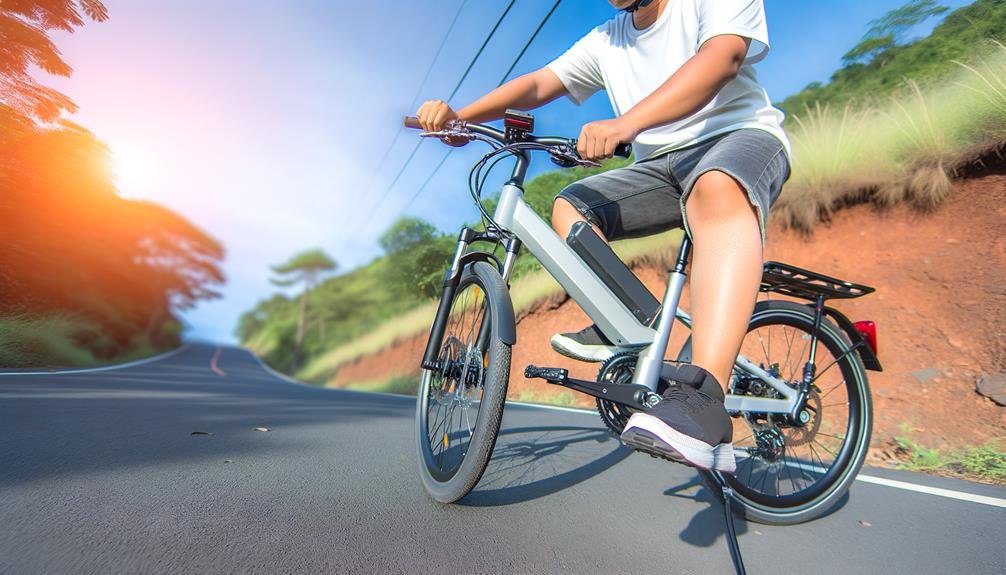
Navigating the world of electric bikes, with its three main classes and varying pedaling requirements and speed limits, provides a unique blend of traditional cycling and innovative technology. Ideal for anyone looking for an alternative mode of transport or a new hobby, electric bikes, or 'e-bikes', offer a blend of physical exertion and convenience. Uniquely, these bikes incorporate a motor and battery, assisting riders when they need it most.
| Feature | Benefit |
|---|---|
| Pedal Assist | Makes cycling less strenuous, ideal for long rides. |
| Throttle Function | Allows the electric bike to go without pedaling, a great feature for uphill rides. |
| Traditional Cycling Option | Offers versatility. You can opt to ride your e-bike as a regular bicycle. |
However, it's crucial to understand that these benefits do require you to pedal. While e-bikes are heavier due to the additional components, the effort required to ride them can vary based on the pedal-assist level. You can choose to go without assistance, turning your e-bike into a traditional bike for a more strenuous workout. This flexibility is what makes e-bikes a popular choice among cyclists.
Electric Vs Traditional Bikes: Speed, Weight, Cost
In comparing electric bikes to their traditional counterparts, it's essential to consider factors such as speed, weight, and cost, each of which significantly impacts the overall cycling experience. The question of 'how hard do you have to pedal an electric bike' often arises, and the answer lies in the understanding of these key factors.
- Speed: An electric bike can go faster than a traditional bike, with Class 3 e-bikes reaching a maximum speed of 28 MPH. This speed advantage can make commutes quicker and less strenuous.
- Weight: Electric bikes are heavier due to the added motor and battery. This weight can make a regular bike feel lighter and easier to pedal when the motor isn't in use.
- Cost: The cost of an electric bike is generally higher due to the advanced technology it incorporates. However, the benefits it offers may justify the price for many riders.
- Pedaling effort: Despite their weight, pedaling an electric bike without motor assistance can provide a comparable workout to a traditional bike, promoting a sense of belonging to the cycling community.
In essence, the 'electric vs traditional bikes: speed, weight, cost' debate is dependent on individual preferences and needs.
Exploring Electric Bike Without Pedaling
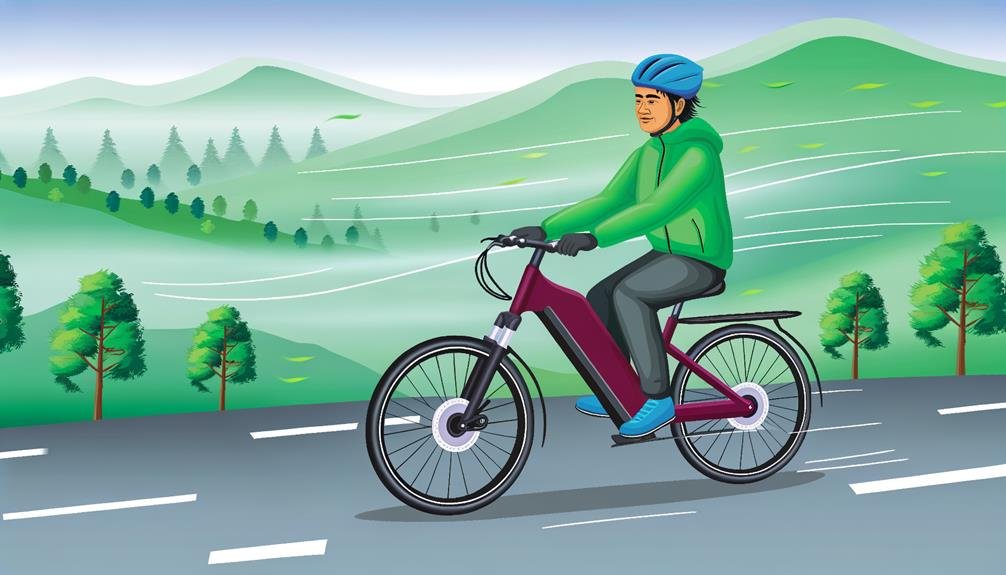
While the pedaling effort on electric bikes contributes to the overall cycling experience, there's also the intriguing possibility of utilizing throttle-based electric bikes, which provide power on demand and allow for a ride devoid of any pedaling.
These bikes function similarly to motorcycles, offering the freedom to go without pedaling. However, like every type of bike, the distance a bike can go without pedaling depends on several factors. These include battery capacity, terrain, and riding conditions.
Generally, the range without pedaling falls between 20 to 35 miles. Although the throttle provides convenience, it may consume more battery power, which could limit your journey's length.
On the other hand, if you choose to begin pedaling, you will not only extend your bike's range but also potentially reach higher speeds and tackle steeper inclines.
| Type of Bike | Range Without Pedaling |
|---|---|
| Throttle-based electric bike | 20 – 35 miles |
| Pedal-assist electric bike | Extended with pedaling |
| Traditional bike | Dependent on rider's fitness |
| Class 3 electric bike (Ride1UP) | Max speed without pedaling |
| Hybrid (Throttle & Pedal-assist) bike | Variable, based on use |
Distance Coverage: Electric Bike Without Pedaling
Delving into the realm of electric bikes, particularly their capacity to traverse distances without the necessity of pedaling, reveals a fascinating interplay of factors such as bike model, battery capacity, terrain, and rider's weight. This interplay ultimately determines how far an electric bike can journey without the aid of pedaling.
- Electric bike mileage without pedaling depends on several factors. One of these includes the bike model, as different bikes are engineered with varying capabilities.
- The battery plays a critical role; typically, the larger the battery, the further the bike can travel. Some electric bikes have a throttle, allowing riders to choose how much they wish to pedal or use the electric motor.
- The terrain also affects the bike's efficiency. Steeper, rougher terrain requires more energy, which could reduce the distance covered.
- Lastly, the rider's weight can also impact the bike's range. Heavier riders may find their bikes cover fewer miles than lighter ones.
In essence, the question of 'How Far Will an Electric Bike Go Without Pedaling?' is complex and depends on several factors. Recognizing these variables can empower individuals to make informed decisions about their e-bike usage.
Best Value Electric Bikes: A Review
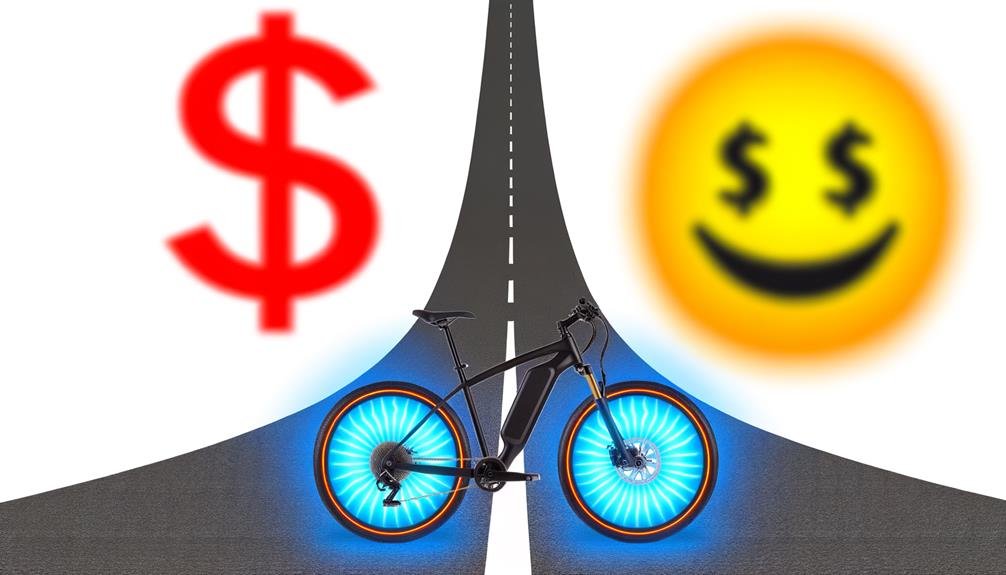
Navigating the landscape of electric bikes, it becomes evident that Class 1 e-bikes offer a unique blend of features, combining the need for pedaling with a motor that caps at a speed of 20 MPH, thus providing an excellent balance of exercise and effortless cruising. These bikes are often designed to provide an easier to ride experience, thereby offering a compelling value proposition.
Determining whether an e-bike delivers the best value for your investment requires careful consideration. A review of best value electric bikes highlights Bluejay Electric Bicycles as a notable contender. They offer a range of Class 1 and Class 3 options that are equipped with mid-drive torque sensor motors, designed to give a smooth ride.
One distinguishing feature of these bikes is the pedal-assist function which activates the motor to give a boost when the user pedals. This allows for effortless cruising and control over speed. Conversely, the throttle function allows the bike to propel forward without pedaling, albeit at the cost of faster battery drainage.
If desired, the bike can also be used traditionally, providing a good workout when the pedal assist or throttle is turned off. This versatility enhances the value proposition of these e-bikes.
Frequently Asked Questions
How Difficult Is It to Ride an Electric Bike?
Riding an electric bike requires understanding of e-bike maintenance, electric bike safety, battery longevity, speed control, and riding techniques. The difficulty varies with the terrain, but proper knowledge ensures a smooth and safe ride.
Can a Beginner Ride an Electric Bike?
Absolutely, a beginner can ride an electric bike. With initial training, appropriate safety measures, and e-bike adjustments, the beginner's comfort and experiences are enhanced. Proper e-bike selection also plays a crucial role in this journey.
How Much Do You Have to Pedal on an E-Bike?
The amount of pedaling on an e-bike varies based on factors like pedal assist levels, rider's fitness, and desire for battery longevity. Higher pedaling resistance can enhance fitness impacts while energy conservation aids in e-bike maintenance.
Do You Have to Pedal Uphill on Electric Bike?
When tackling uphill challenges on an electric bike, terrain adaptability, battery efficiency, gear utilization, and pedal assist levels come into play. Riding techniques vary, but pedaling is generally required for optimal performance and battery conservation.
Conclusion
In conclusion, the pedaling intensity on an electric bike varies, largely influenced by the bike type and assistance level.
Notably, Class 1 and 3 e-bikes require pedaling, unlike Class 2.
The weight of e-bikes, generally heavier than traditional bikes, can pose additional pedaling challenges.
Nevertheless, with practice and familiarity, enhanced performance is achievable.
Interestingly, the possibility of maneuvering an e-bike without pedaling introduces a unique dynamic, promising extended distance coverage.

Charles Miller is a veteran bike enthusiast with over 12 years of experience dealing with bikes as a mechanic. Despite immense love and expertise for his Tacoma, he rides his Trek Ebike more. Anytime you meet him, you’ll either hear him talking about Bikes, or writing about all things bikes and cars on this blog.
More Posts
